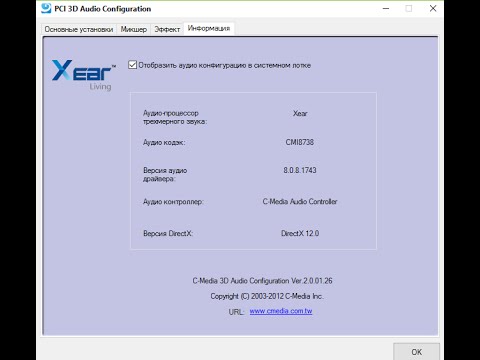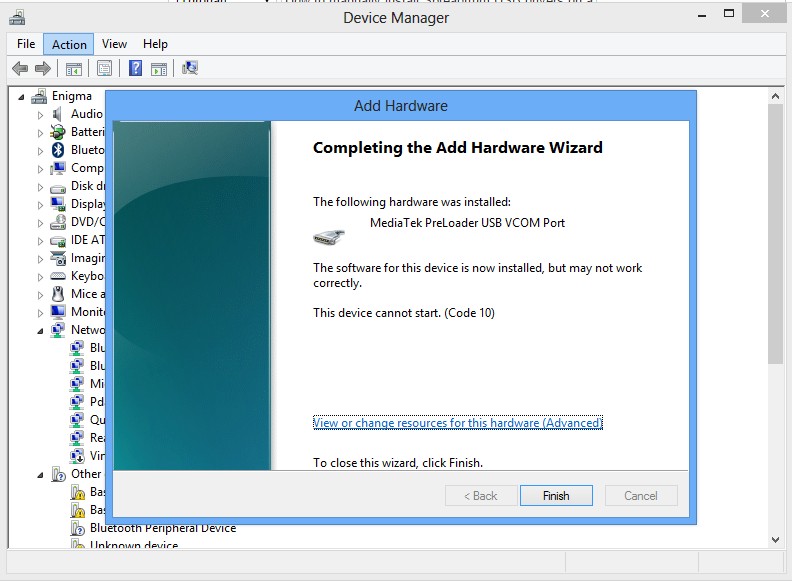
- #C MEDIA PCI AUDIO DEVICE WINDOWS 7 64 BIT UPGRADE#
- #C MEDIA PCI AUDIO DEVICE WINDOWS 7 64 BIT FULL#
The lately launched Intel Core i9-13900K processor enables users to enjoy O.C. Other than the Turbo Boost mode, GIGABYTE Instant 6 GHz technology can unleash the potential power of the processor to boost the single-core performance up to 3% higher, which leading up to experiencing the unparalleled performance of future processors. By simply updating the latest BIOS on GIGABYTE's Z790 motherboards and activating related settings, users can boost the performance of Intel Core i9-13900K to 6 GHz in a snap. Ltd, a leading manufacturer of motherboards, graphics cards, and hardware solutions, today announced the Instant 6 GHz technology which is exclusively designed for performance enhancement of Intel Core i9-13900K processor. Finally, ASUS is bolstering its TUF Gaming lineup with the TUF Gaming Z790-Plus WiFi, which brings DDR5 support to the family. This motherboard offers premium connectivity and bespoke style, and it's fully ready for next-gen graphics cards and ultra-fast PCIe 5.0 storage. Then, for creative professionals of all kinds, ASUS offers the ProArt Z790-Creator WiFi. The ultimate option for memory overclocking enthusiasts, this motherboard boasts a cutting-edge feature set.
#C MEDIA PCI AUDIO DEVICE WINDOWS 7 64 BIT UPGRADE#
Overall, new ASUS Z790 motherboards are ideal solutions for any user who wants to build a next-gen machine or upgrade their existing system.įirst up is the ROG Maximus Z790 Apex. The team at DTU expects to be able to hit speeds of up to 100 Petabit per second in the future.ĪSUS today announced the availability of new Intel Z790 motherboards, including the ROG Maximus Z790 Apex, TUF Gaming Z790-PLUS WiFi and ProArt Z790-Creator WiFi - all of which provide DDR5 memory module support and PCIe 5.0 slots for video cards and storage.ASUS Z790 motherboards offer tremendous value to anyone assembling an Intel 13th Gen machine that includes AEMP II, AI Overclocking, AI Cooling II, PCIe 5.0 M.2 slots, Thunderbolt 4, WiFi 6E, Quick Charge 4+ technology and comprehensive connectivity.

According to DTU, without the frequency comb, they would've needed more than a thousand lasers to achieve the same speeds using state-of-the-art commercial equipment. This allows multiple streams of data to be encoded with data, before being re-integrated and sent as a single infrared laser signal over the fibre. The DTU team's frequency comb was made by Chalmers University of Technology in Sweden and it breaks down the infrared laser that's being used to transmit the data, into a rainbow spectrum, where each colour corresponds to a frequency equivalent. Although the distance is far from the longest, as a team of Japanese researchers have managed to transmit a 319 Terrabit per second datastream over a distance of 3,001 km (1,864 miles), although they used signal amplifiers every 70 km to reach this distance.

This equates to more than the total volume of global internet traffic that's being sent every second, according to DTU. The team of researchers hit a data transmission speed of an insane 1.84 Petabits per second over a distance of 7.9 kilometres-or 4.9 miles if you like-using standard fibre optic lines.

A team of researchers from the Technical University of Denmark (DTU) has managed to break the data transmission record by quite some margin, using something called a frequency comb, which is a photonics chip.
#C MEDIA PCI AUDIO DEVICE WINDOWS 7 64 BIT FULL#
Transmitting data over the internet is something that just happens for most of us, but the infrastructure that's powering the internet is full of bottlenecks and researchers around the world are testing new ways of being able to transmit more data using already installed fibre.


 0 kommentar(er)
0 kommentar(er)
